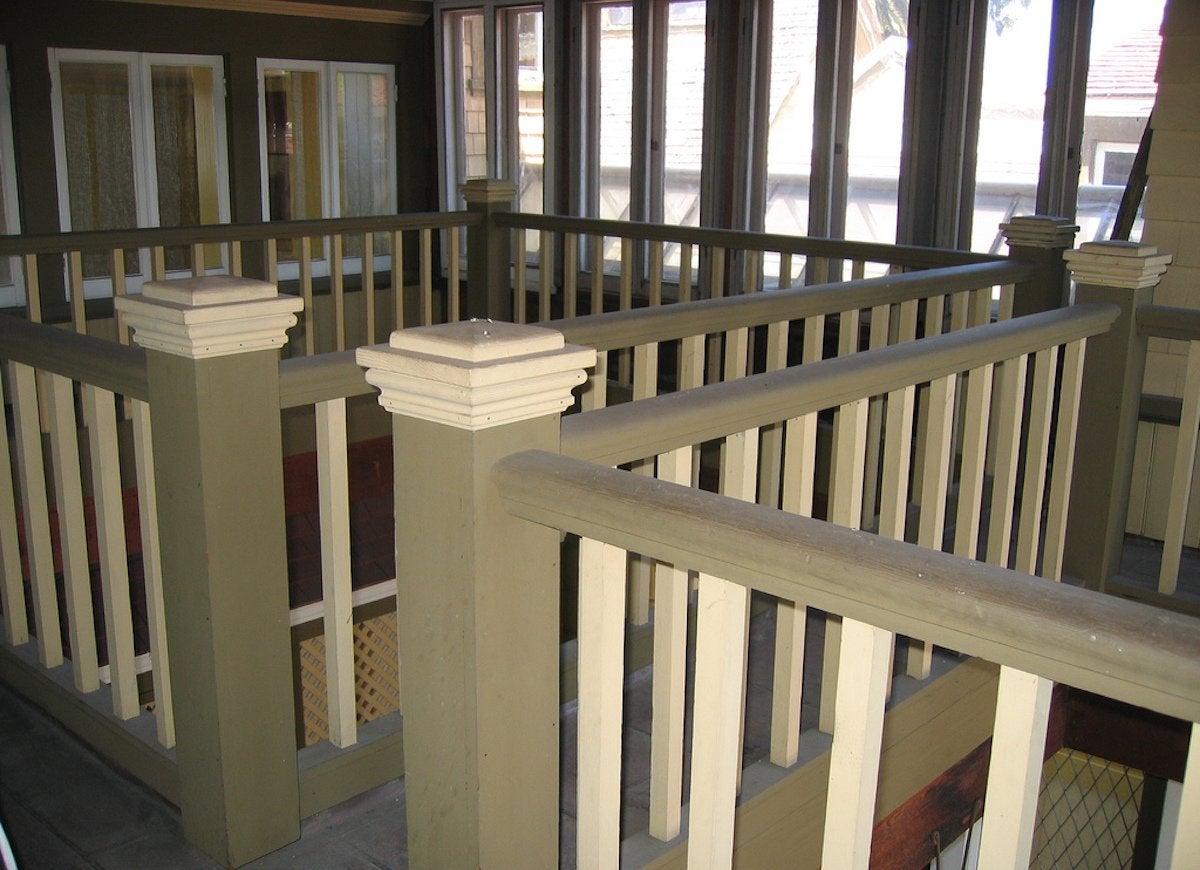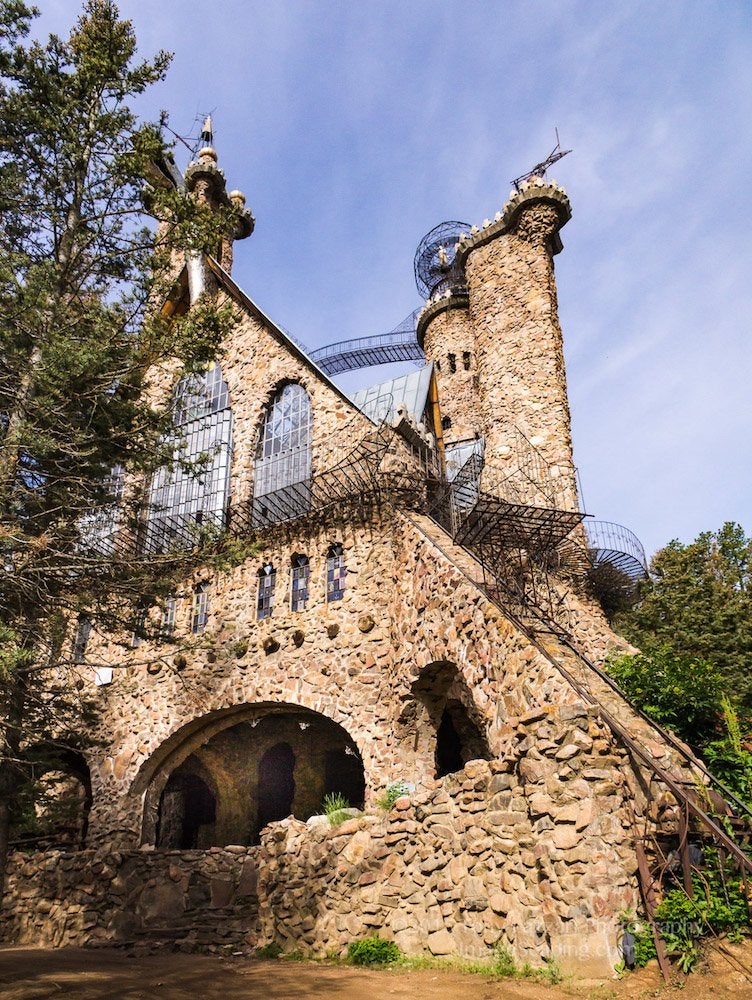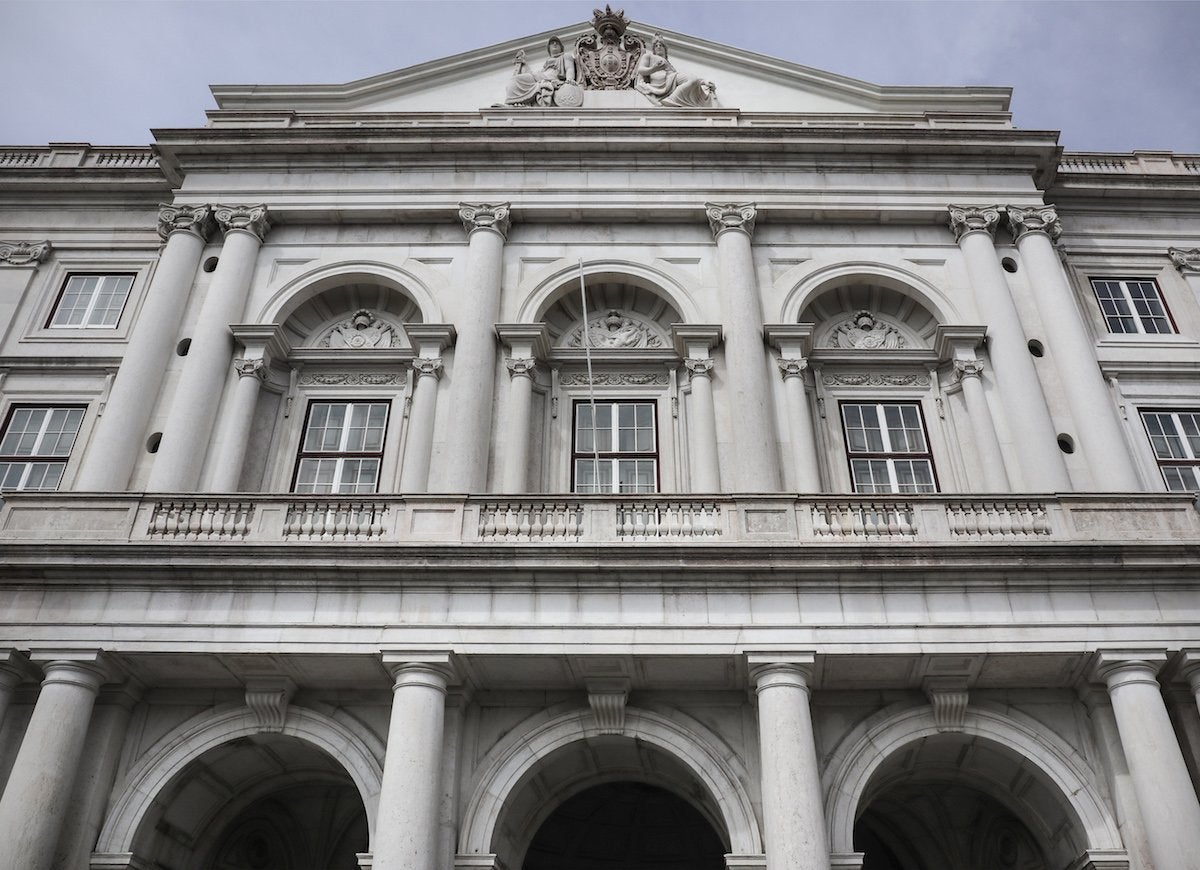

We may earn revenue from the products available on this page and participate in affiliate programs. Learn More ›
Home Advice You Can Trust
Tips, tricks & ideas for a better home and yard, delivered to your inbox daily.
By signing up you agree to our Terms of Service and Privacy Policy.
Woodchester Mansion in Gloucester, England

While most architects are renowned for their finished works, Benjamin Bucknall’s magnum opus is a half-completed edifice. After the death of William Leigh, the wealthy merchant who commissioned Woodchester Mansion in 1857, construction on the 27-room mansion was abandoned in 1873.
Woodchester Mansion

flickr.com via Angus Willson, Mark Rosher, and Kathryn Wright
From the outside, this Gothic Revival-style mansion impresses with its stately windows and gargoyle-festooned stone exterior. The interior, however, is suspended in mid-construction, with corridors that abruptly end, fireplaces that don’t meet the floor, and scattered tools and ladders that haven’t been touched by a builder for more than a century. Though never completed, the mansion is open for tours on weekends, from early spring to mid-fall.
Winchester Mystery House in San Jose, California

flickr.com via Doug Letterman
Rumor has it that Sarah Winchester, the eccentric widow of gun magnate William Wirt Winchester, devised the convoluted design of this sprawling Queen Anne to confound evil spirits.
Winchester Mystery House

flickr.com via Donna Martin
As if the mansion’s upside-down columns, doors that open on to solid walls, and stairs that lead to the ceiling aren’t peculiar enough, the Winchester Mystery House was also left with unfinished rooms and walls with loose nails when work on the 160-room abode was halted following Mrs. Winchester’s death in 1922.
Related: Weird or Wonderful? 22 Homes That Are Anything But Ordinary
Longwood in Natchez, Mississippi

flickr.com via faungg’s photos
When the Civil War began, construction on this grand octagonal plantation home in Natchez was halted. At the time, only nine basement-level rooms of the Oriental Villa-style structure had been completed, though a total of 32 rooms had been planned.
Related: America’s 50 Most Infamous Homes
Longwood

Wikimedia Commons via Elisa.rolle
Longwood was commissioned in 1859 by Dr. Haller Nutt, a successful cotton planter. After he died in 1864, his family continued to live in the elegant basement rooms. In fact, Nutt family members lived there into the early years of the 20th century. Though unfinished, Longwood remains an enduring symbol of antebellum luxury and wealth.
Versailles House in Windermere, Florida

Wikimedia Commons via 350z33
Construction of this 85,000-square-foot home inspired by and named after the Palace of Versailles in France has paused and restarted multiple times since ground was broken in 2004.
Versailles House

Wikimedia Commons via Anna Frodesiak
Owned by Westgate Resorts’ founder David Siegel and his wife, Jackie, Versailles House is now slated to be finished by 2019. It is expected to stand as one of the largest single-family homes, and the fourth most expensive home, in the country.
Bishop Castle in Rye, Colorado

flickr.com via Tony.Lazz
No road trip through central Colorado is complete without a stop along State Highway 165 at this monument to one man’s determination and creativity. The towering stone edifice began as a cottage, but then began to take on the appearance of a medieval castle.
Related: Weird or Wonderful? 22 Homes That Are Anything But Ordinary
Bishop Castle

flickr.com via Misty Faucheux
Jim Bishop has spent the better part of five decades erecting his idiosyncratic stone castle, and though an illness slowed him down in recent years, he still considers the roadside retreat to be unfinished.
Boldt Castle on Heart Island, Alexandria Bay, New York

Wikimedia Commons via Clément Bardot
The general manager of the Waldorf-Astoria Hotel, George Boldt commissioned this six-story castle as a gift to his wife, Louise, in 1900. Upon her death in 1904, the grief-stricken widower halted construction.
Boldt Castle

flickr.com via Inhabitat
After Louise’s death, Boldt never returned to the island, leaving behind a partially completed six-story castle as a monument to his love. Over the years, the structure sank into disrepair, damaged by vandals, weather, and the passage of time. The Thousand Islands Bridge Authority acquired the property in 1977 and has been restoring it to the condition it was in when construction was halted. They also offer tours of the castle from May through October.
Lyveden New Bield in Northamptonshire, England

Wikimedia Commons via Wehha
Constructed as the summer home of Catholic landowner Sir Thomas Tresham, Lyveden New Bield incorporates Catholic symbols and religious-themed friezes into its design.
Lyveden New Bield

flickr.com via Tusela
Following Tresham’s death in 1605, the builders’ devotion to the project dimmed. The never-completed Elizabethan residence was passed on to Tresham’s son. In 2013, it was acquired by the National Trust.
Kellie's Castle in Batu Gajah, Malaysia

Wikimedia Commons via Artboyz
Civil engineer and planter William Kellie Smith commissioned craftsmen all the way from Madras, India, to help realize his grand vision of a home that incorporated Scottish, Moorish, and Indo-Islamic architectural elements.
Related: Weird or Wonderful? 22 Homes That Are Anything But Ordinary
Kellie's Castle

Wikimedia Commons via Fairuskhafiz
When Smith died of pneumonia during a trip to Portugal in 1926, his wife returned to Scotland. Kellie’s Castle, or Kellie’s Folly, as it is also known, was never completed and is now a popular local tourist attraction.
Villa Arnaldi in Vicenza, Italy

Wikimedia Commons via Hans A. Rosbach
Vincenzo Arnaldi may be the only house flipper in history to have turned a profit before the flip was even finished. In 1547 the wealthy Italian enlisted famed architect Andrea Palladio to restructure his property, an agricultural complex, to increase its value during a legal dispute with the property’s previous owner.
Villa Arnaldi

Wikimedia Commons via Hans A. Rosbach
When Arnaldi reached a settlement with the previous owner, he stopped work on the renovation and chose instead to rent out the partially rebuilt structure.
Ajuda National Palace in Lisbon, Portugal

flickr.com via Kotomi_
A number of economic and political forces, ranging from financial constraints to the invasion of Napoleon’s troops in 1807, conspired against the completion of this palace in Lisbon that was intended to house Portugal’s royal family.
Ajuda National Palace

flickr.com via Kotomi_
Although the Ajuda Palace served as the official residence of the monarchy from the late 1800s until the exile of the royal family in 1910, the western wing of the luxurious neoclassical structure was never completed.

Our Favorite Prime Day Deals Are Sure to Sell Out
Prime Day runs July 8 through 11, and Amazon (and many more retailers) have released hundreds of exciting seasonal deals. Check out our favorite products in the sales, from power tools and outdoor equipment to robot vacuums and power stations.